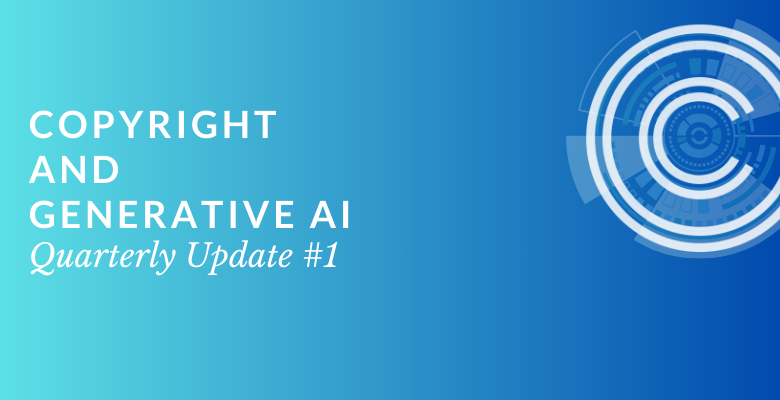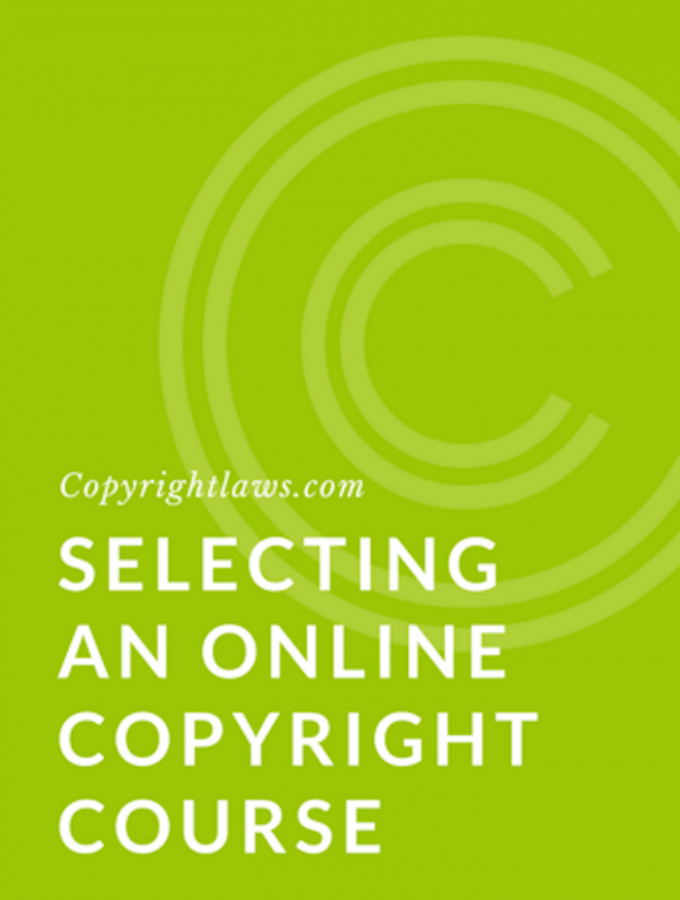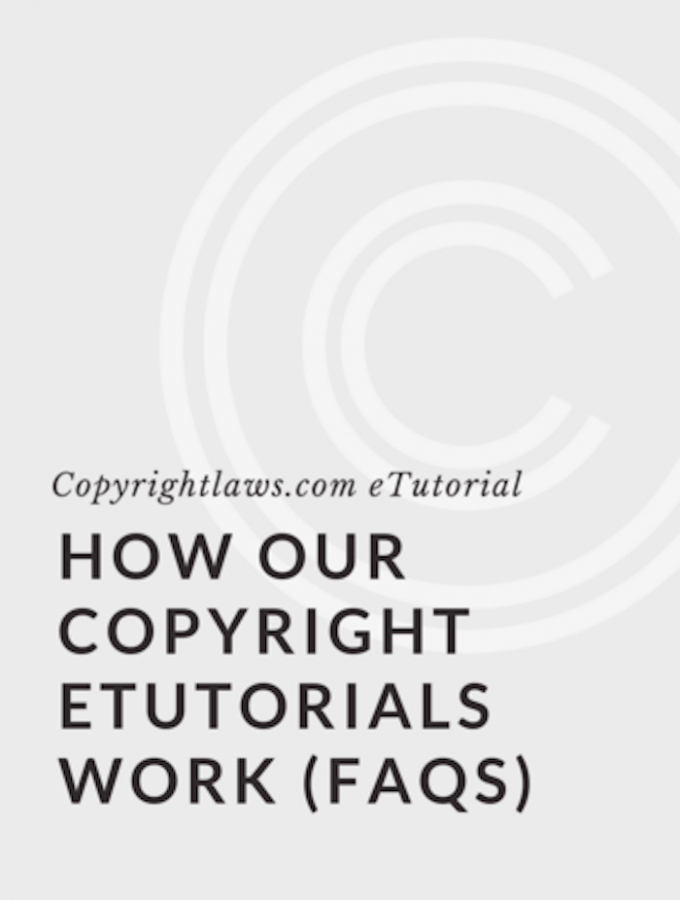
Welcome to the first quarterly copyright and generative AI (GAI) blog post. If you’ve come across this page, you are likely working in the copyright field in some capacity. As such, the current debate surrounding what, if any, changes need to be made to copyright law to account for the advancements in GAI has probably piqued your interest. With so much information and many opinions swirling around the internet from all sides of the debate, it can be hard to keep track of where the conversation stands. We hope these blogs will help make sense of it all.
Every three months, you can expect an updated post that includes important cases to watch, recent international developments, a summary of the latest discussions (with an effort to not take sides) and finally a suggested long-form article to help you dive deeper into one aspect of the subject.
So, without further ado, let’s get into it!
Cases to Watch
Thomson Reuters Enterprise Centre GmbH et al v. ROSS Intelligence Inc., Docket No. 1:20-cv-00613 (D. Del. May 06, 2020) USA
In one of the first cases to be brought against a company behind an AI system (it should be noted that the court went out of its way to specify that the system in question was not generative), we have recently seen a key judicial decision that might influence some, if not all, similar cases before the courts concerning training methods. Judge Stephanos Bibas ruled as a matter of law that not only did Ross Intelligence Inc. infringe Thomson Reuters’ copyrights in using their content to train its artificial intelligence research application, but that their argument of fair use is invalid. As most GAI companies are using an argument of fair use as the main defence in their own cases, it will be interesting to see if this judgment causes a ripple effect across the various legal districts in the United States.
Samuelson-Glushko Canadian Internet Policy and Public Interest Clinic v. Ankit Sahni (Filed with the Federal Court) Canada
In July 2024, the Samuelson-Glushko Canadian Internet Policy and Public Interest Clinic (CIPPIC), filed an application with the Canadian Federal Court to either cancel or amend a copyright registration by Ankit Sahni which named a GAI program as co-author. Despite the fact that the same request for registration was refused by the US Copyright Office, Mr. Sahni successfully registered his work Suryast with the Canadian Intellectual Property Office. The copyright registration, which is an automated process in Canada as opposed to the more involved one in the United States, lists RAGHAV Artificial Intelligence Painting App (RAGHAV) and Mr. Ankit Sahni as co-authors. Once this case goes to trial, the result will likely influence the copyrightability of all GAI works in Canada moving forward.
Sarah Anderson et al. v. Stability AI Ltd., et al, Docket No. 23-cv-00201-WHO (Northern District of California, 12 August 2024) USA
One of the many cases currently before the courts in the US which pits creators against the developers of GAI programs, this one saw a major step forward when US District Judge William Orrick advanced all copyright infringement and trademark claims in August 2024. By ordering the case to move forward, the case could further involve any AI company which has incorporated the model in question, Stable Diffusion, into its products. Another one to watch for sure!
These are just a few of the many ongoing cases involving copyright and GAI (to say nothing of those involving other areas of IP). For a great summary of the major cases before the courts in the US, see this article: Every AI Copyright Lawsuit in the US, Visualized | WIRED
International Developments
Since the above section focused on North American cases regarding copyright and GAI, it might seem as though this is where the majority of the conversation is occurring. In fact, countries around the world are grappling with this new reality and how to move forward in such a way that balances the needs of creators and users. As such, the following are some of the most intriguing decisions and debates currently underway abroad. Think we missed something big? Feel free to get in touch!
In Europe, the EU AI Act is largely concerned with matters of privacy and transparency, but it also includes some copyright connections. For example, there are articles which require providers of general-purpose AI models to develop policy to respect creators’ rights as well as to summarize the content used for AI training. However, the understanding is that these provisions, along with the Act as a whole, are to be handled by public law. In Germany in particular, there are a few possible options for enforcing these copyright provisions under private law. You can find an excellent summary of this discussion on the Kluwer Copyright Blog in parts one and two here.
Outside of the Act, the European Copyright Society has published its official position on copyright and GAI. The full opinion is worth a read as it makes clear which issues the Society believes require the most urgent consideration by the European Union.
No longer beholden to the EU’s laws, the UK Government published a consultation in December 2024 on its proposal to change the way AI model training is treated in copyright law. The consultation is open until the 25th of February and invites comments on the government’s proposal for a wide-ranging exception for text and data mining, including for commercial uses. Many creators in the UK have already come out against this suggestion arguing that such a move would discourage further human creativity.
Summary of Latest Discussions
We are very much still in the early days of discussing the status of copyright with regard to the development of GAI models. The main points of discussion are threefold: whether using protected materials to train models constitutes copyright infringement; whether works produced using GAI can be protected by copyright; and who is liable for copyright infringement in works created using GAI that appear too similar to existing protected works. Now, these three areas appear equally crucial to the overall discussion, but we shall see if some issues rise to the top in the coming months. Hopefully this section will change significantly by the time the next quarterly edition is produced!
Deep Dive
For this quarter’s deep dive, we’re suggesting an article by Osgoode Hall Law School’s Carys J. Craig published in August 2024. The AI-Copyright Trap argues that copyright might not be the best tool to support human creators in the face of GAI’s capabilities. It’s an interesting look at why updating the current laws might not be the best solution (which is only one of the options being debated). Bear in mind that we’re not sharing this article, or any further deep dive articles, to demonstrate support for a particular position. Instead, we offer it as an opportunity to improve our understanding of one of the many aspects of this complicated debate.
More Information
That’s it for this quarter’s update. However, if you’re looking for more regular and up-to-date news about the nexus of copyright and GAI, check out our free newsletter: Copyrighting AI. And if you have any thoughts on what we shared here, please feel free to reach out!



